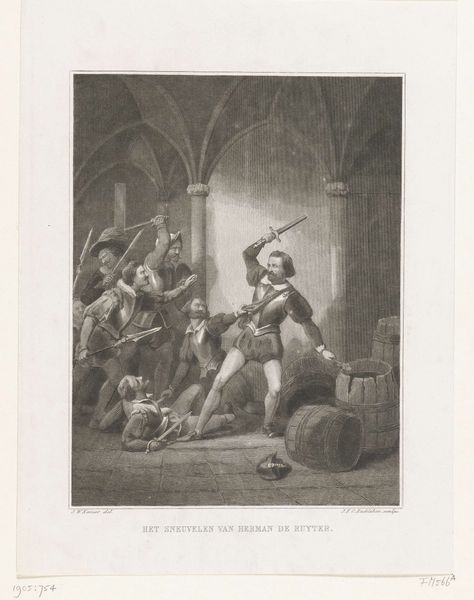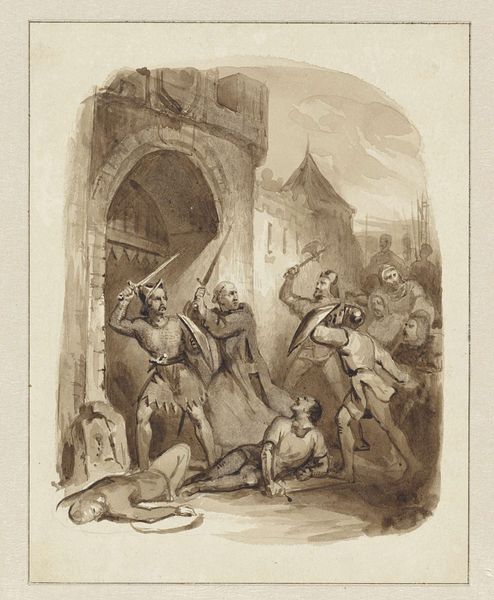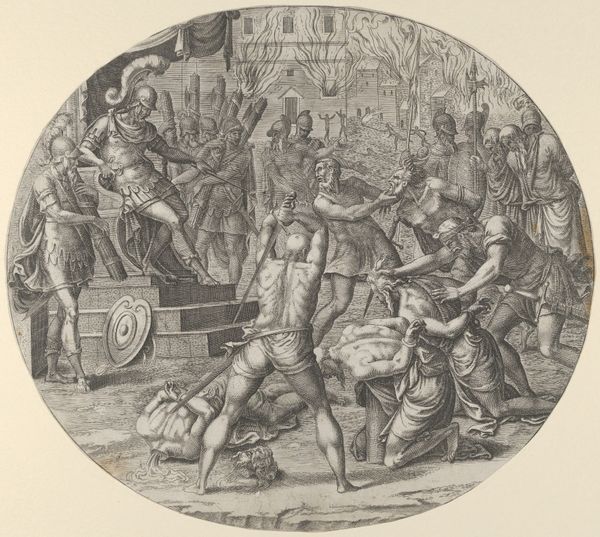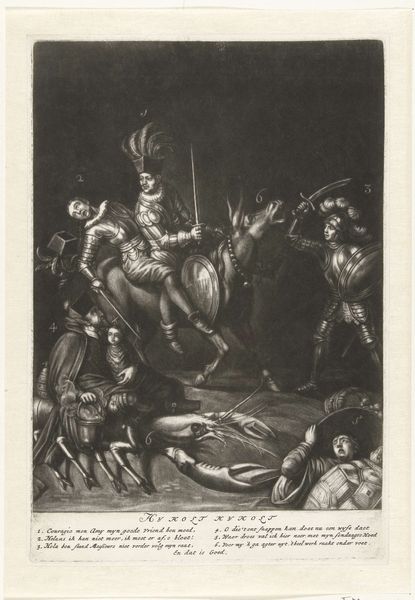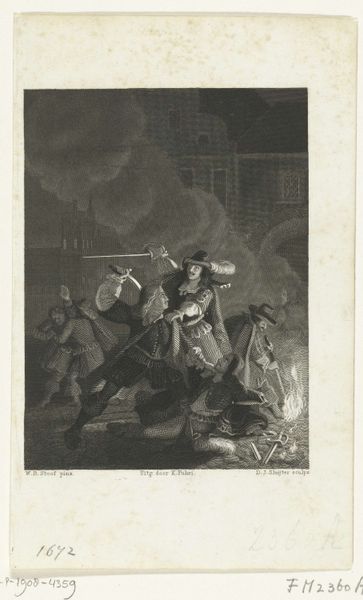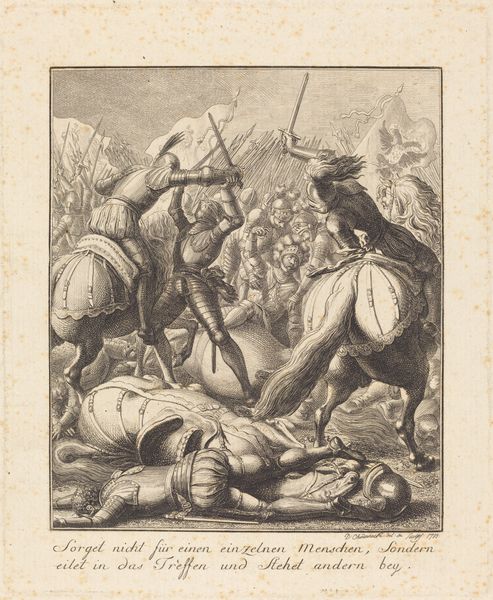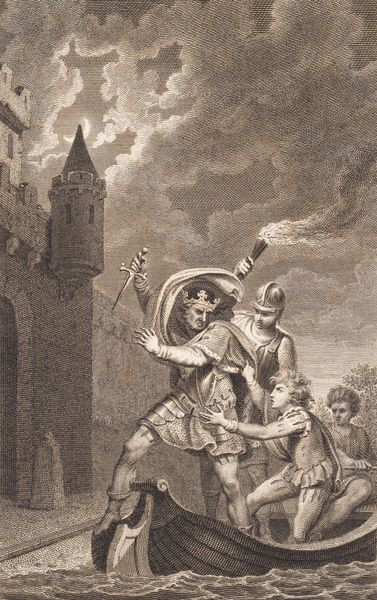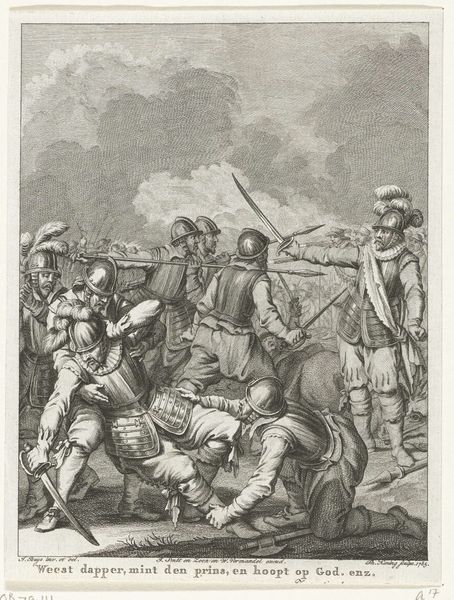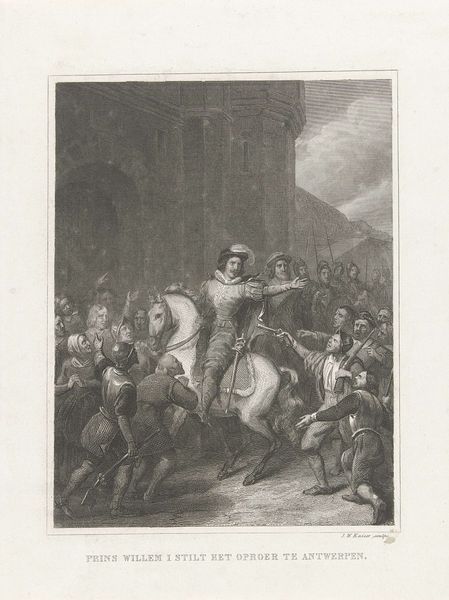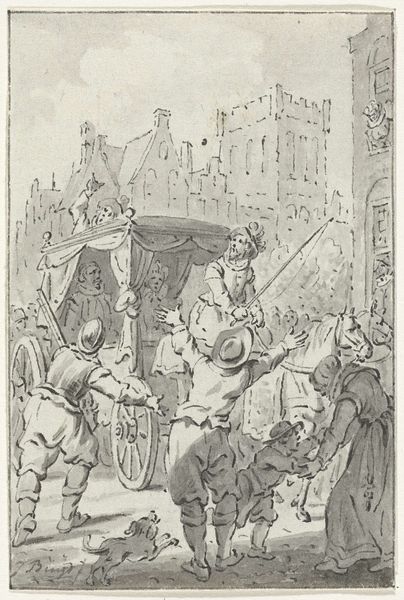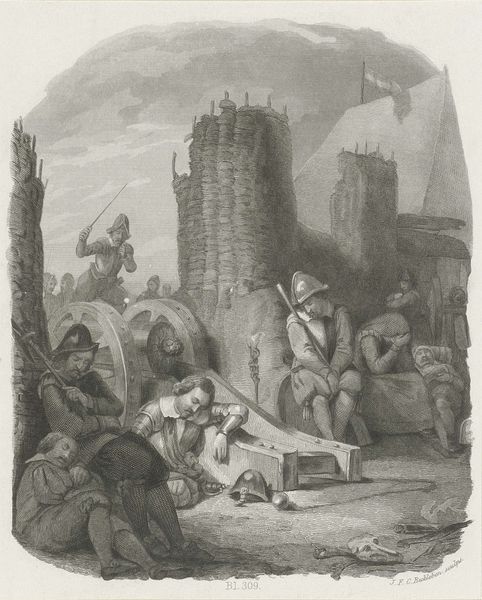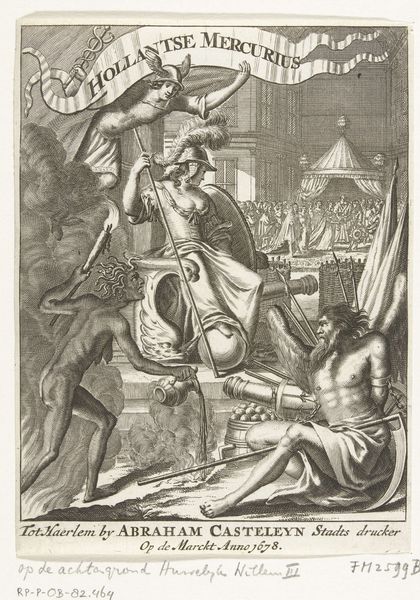
Dimensions: height 179 mm, width 137 mm
Copyright: Rijks Museum: Open Domain
Editor: Here we have "Het sneuvelen van Herman de Ruyter op Loevesteyn, 1570", or "The Slaying of Herman de Ruyter at Loevesteyn, 1570," a drawing in ink made in 1852 by Johann Wilhelm Kaiser. It depicts a violent scene within a vaulted room. What do you see in this piece, what meanings do you find conveyed through its imagery? Curator: Well, at first glance, we see a clear Baroque influence with its dramatic action and chiaroscuro effect created by the ink washes, despite being created in the 19th Century. But consider the date, 1852; what cultural memories was the artist trying to invoke through this depiction of a 16th-century event? Editor: He's definitely reaching back into the past, but with what intention? Is it pure history painting? Curator: I think it goes beyond simple historical documentation. Notice the dynamism and the carefully staged chaos. The fallen figure, the hero with his sword raised, almost theatrical. Isn't it curious how historical events can become laden with symbolic weight? Are these just figures, or representations of broader political tensions and cultural identity? Editor: So, you're suggesting that Kaiser isn't just showing us an event, but using it to comment on the present, too? Is it a symbol of national pride or, perhaps, a cautionary tale about conflict? Curator: Precisely. Think about the visual language – the swords, the vaulted ceilings, the lighting. These all evoke power and drama. Are there other details, objects that strike you as particularly meaningful, not just for their aesthetic value, but for their symbolic potential? What could these barrels suggest? Editor: Perhaps they signify the hidden nature of conflict, or that things may not be quite what they seem on the surface, the way things are concealed. Curator: Exactly. Visual symbols create continuity between the past and the present. Editor: It’s amazing how a historical drawing can hold so many layers of meaning beyond its immediate subject matter. Thanks for helping unpack those. Curator: My pleasure. These kinds of images help us see how much our present is shaped by the symbols and narratives we inherit from the past.
Comments
No comments
Be the first to comment and join the conversation on the ultimate creative platform.
